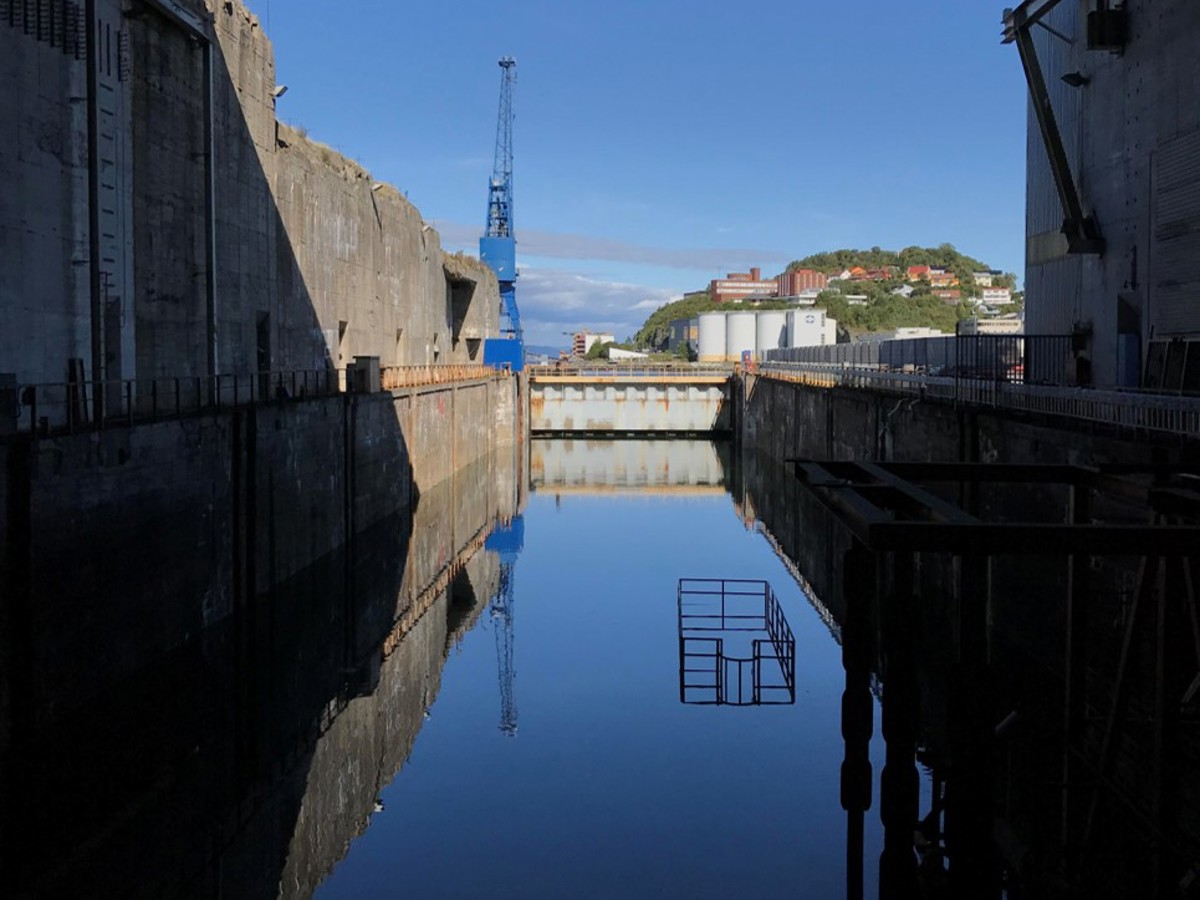The OceanTech Subsea Test Centre, located in Trondheim's downtown harbour within a repurposed submarine base, plays a key role in adapting our equipment and tools to meet the unique demands of each project. It is also used for personnel training, and serves as a hub for testing of access methods and new innovations.
Roger Bugge Olsen, Senior Engineer Marine Operations at OceanTech, underlines the importance of the test centre: “By addressing all details upfront, we minimise the risk of downtime and accidents, and help pilots and climbers become familiar with the operation. When we are offshore, it is important that everything works flawlessly.”
The test centre is also available for hire. Designated as a cultural heritage site, it has been used for film and photo shoots, as well as cultural activities.
“The Norwegian Broadcasting Corporation has used the venue to film the series Norway’s Toughest,” Olsen says.
More commonly, though, marine companies use the facilities during the off-season.
Marine equipment testing and personnel training
The facilities can be used for testing the durability and performance of subsea equipment and tooling, the structural integrity of fish farming cages, and the components of wind turbines.
“With direct quay access, the test centre is also well-equipped to handle light shipyard operations,” Olsen adds.
Given our close proximity to the Norwegian University of Science and Technology (NTNU) and research organisation SINTEF, it is also frequently used for educational and research purposes. Several innovations, including our new autonomous inspection robot developed in collaboration with SINTEF, have undergone testing in the wet dock.
Major offshore operator clients include Siemens, AkerBP, Shell, ConocoPhillips, OKEA, and Equinor. When Equinor replaced the riser protection nets at the Heidrun platform, they conducted testing and training on a mockup rig that precisely replicated one sector of the rig legs, Olsen says.
"Riser protection net replacements involve multiple simultaneous operations and climbing teams. Given the project's duration of several months, training four or five teams was essential. It was also important to thoroughly test equipment and techniques before heading offshore," he adds.
By testing onshore, Equinor was able to explore whether the proposed methods and tools were able to perform the required tasks, and make adjustments to minimise costly repairs and waiting time offshore.
In addition to testing and refining equipment, tooling, and solutions, the test centre serves as a training ground for personnel preparing for offshore operations. Training in replica offshore environments, closely mirroring actual offshore conditions, enhances both efficiency and safety.
“At OceanTech, we place strong emphasis on joint training with our partners. This is essential for achieving optimal efficiency and safety in our splash zone projects. We fine-tune our equipment, verify functionality, and ensure that subcontractors are thoroughly trained,” Olsen says.
“The test centre provides an excellent venue for ROV training, and other training needs offshore operators may have,” Olsen adds.
Facilities for hire
The test centre offers the following facilities:
- A dry or wet dock (120 x 20 x 14 metres)
- Two traversing cranes (25-ton capacity)
- Warm and cold storage facilities
- Workshop for maintenance and servicing, including electrical work
- Forklift
- Office facilities to support all operational needs
We offer convenient access for large trucks and sea vessels. The dry dock features a high-capacity pump system, enabling it to be filled or emptied overnight.
Rental terms are tailored to each project, providing favourable conditions for startups, SMEs, students, and research institutions. For more information about rental opportunities, please contact Roger Bugge Olsen at roger.olsen@oceantech.no.




